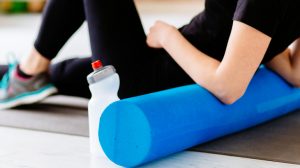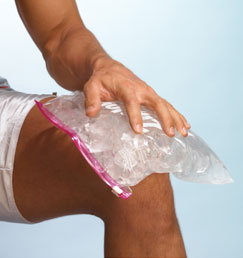When Is It Tendinitis?
Tendinitis is one of the most common diagnoses for soft tissue pain resulting from repetitive motion. As repetitive motion disorders have dramatically increased, so has the incidence of tendinitis.
However, recent investigations into the cellular nature of tendon pathologies have brought forth interesting discoveries that may alter the way tendinitis is treated. In this month’s column, let’s take a look at some of these fascinating discoveries.
The first stop along the way is to take a closer look at the anatomical and biomechanical characteristics of tendons. Tendons are connective tissue structures that are primarily composed of collagen and elastin fibers. Collagen fibers primarily give the tendon its strength, and elastin fibers give it a small amount of flexibility.
Since the tendon fibers are primarily designed to transmit a strong tensile (pulling) load from the muscle directly to the bone, the tendon is not designed to be very flexible. If it were very flexible, much of the muscle’s contraction force would be absorbed by the tendon and not transmitted to the bone. It would be like trying to pull a heavy object across the floor with a bungee cord instead of a rope.
The tendon gets its strength not only from the quantity of collagen fibers it contains, but also from the arrangement of the fibers. In tendons, the collagen fibers are arranged mostly in a parallel direction, in line with the direction of the muscle fibers. This arrangement will give the tendon the greatest amount of strength in the direction that the muscle fibers are pulling. Ligaments, on the other hand, have a greater quantity of elastin. In ligaments, the collagen fibers are arranged in a slightly more random fashion to give the ligament strength against forces in several different directions.
Tendons throughout the body are surrounded by a thin connective tissue membrane called the paratenon. The paratenon is primarily designed to reduce friction forces between the tendon and other surrounding structures.7
Tendons in areas such as the distal extremities are exposed to much higher friction forces, as the tendons bend around the joints and are held closely by retinacula. These tendons are surrounded by an additional connective tissue layer called the epitenon. The epitenon is commonly referred to as the tendon sheath. Keep in mind that not all tendons have the tendon sheath, only those exposed to specifically high friction forces against adjacent structures, like a binding retinaculum. In some instances, an inflammatory condition will develop between the tendon and its sheath. This usually occurs from excessive friction. Adhesions may also develop between the tendon and the sheath. This condition is called tenosynovitis. However, in order for tenosynovitis to be present, the tendon in question must have an epitenon (sheath).
In some instances a diagnosis of tenosynovitis may be made because of an observed fibrous adhesion between the tendon and the paratenon but there is no tendon sheath. This happens commonly with the Achilles tendon.3 It does not have a synovial sheath (epitenon) but its paratenon is quite visible. Degeneration or adhesion of the paratenon or tendon fibers in this instance is not tenosynovitis. For many years, the term tendinitis has been used to describe painful overuse conditions of the tendon. It has been thought that the pathology involved the tearing of individual tendon fibers and a subsequent inflammatory response in the tendon. Treatment, therefore, has focused on the inflammatory nature of the problem. However, a number of recent scientific investigations into the nature of overuse tendon injuries have painted a very different picture.1,2,5,6
In these investigations, most tendinitis complaints have been found to be devoid of inflammatory cells. It appears that tendon fiber tearing is not the primary part of the problem. The main problem in these overuse tendon disorders appears to be collagen degeneration from overuse. It has also been suggested that this would explain the frequent lack of success in treating tendinitis complaints with anti-inflammatory medication. Numerous authors and clinicians have suggested that the term “tendinosis” (literally meaning “pathology of the tendon”) is a much more appropriate term than “tendonitis,” which specifically indicates inflammation.
So what does this mean for the treatment of tendinitis with massage? The good news is that these findings are an even stronger support for the benefits of massage for treating these overuse tendon injuries. Collagen degeneration is a primary part of most tendinosis pathology. Therefore, what is needed is a treatment that can help stimulate collagen production in the healing process.
Interestingly, several recent studies have found that the primary benefits of deep friction massage may be the stimulation of collagen production in damaged tendon fibers, rather than the breaking up of fibrous scar tissue in chronically inflamed tendons as previously thought.4 We have known clinically for years that massage works well in the treatment of tendinosis; now we may be closer to understanding why.
References:
- Almekinders, L. C. and J. D. Temple. Etiology, diagnosis, and treatment of tendinitis – an analysis of the literature. Med Sci Sport Exercise. 30:1183-1190, 1998.
- Astrom, M. and A. Rausing. Chronic Achilles tendinopathy. A survey of surgical and histopathologic findings. Clin Orthop:151-164, 1995.
- Cailliet, R. Foot and Ankle Pain. 2nd ed. Philadelphia: F.A. Davis Company, 1983.
- Gehlsen, G. M., L. R. Ganion, and R. Helfst. Fibroblast responses to variation in soft tissue mobilization pressure. Med Sci Sport Exercise. 31:531-535, 1999.
- Khan, K. M., J. L. Cook, F. Bonar, P. Harcourt, and M. Astrom. Histopathology of common tendinopathies – Update and implications for clinical management. Sport Med. 27:393-408, 1999.
- Khan, K. M., J. L. Cook, J. E. Taunton, and F. Bonar. Overuse tendinosis, not tendinitis – Part 1: A new paradigm for a difficult clinical problem. Physician Sportsmed. 28:38+, 2000.
- Nordin, M. and V. Frankel. Basic Biomechanics of the Musculoskeletal System. 2nd ed. Malvern: Lea & Febiger, 1989.
Ready to #feelbetter?
You're just a click away from a wicked good massage!
-

60 Minute Massage Gift Card
$170.00 Add to cart -

90 Minute Massage Gift Card
$255.00 Add to cart -

Mini Aer Small Room Air Purifier
$149.00 Add to cart -
Sale!

Thera-Pearl Sports Pack/Hot Cold
Original price was: $14.99.$12.99Current price is: $12.99. Add to cart -

3 Somadome Sessions Gift Card
$135.00 Add to cart -

20 Minute Somadome Gift Card
$45.00 Add to cart -
Sale!

TheraBand® Stretch Strap
Original price was: $19.99.$14.99Current price is: $14.99. Add to cart -

TheraBand CLX Connective Loop
$14.99 Select options
May Flowers-Life Hack
April Showers Bring 5 Flower Hacks What do you get when you combine soda, vodka, apple cider vinegar, hair spray & bleach? Some incredible ways to preserve your flowers this season. Sure, April showers bring May flowers, but mother nature went a tad over board with it this April. So how well are you prepared…
Read More#FeelBetterBoston Recap
#FeelBetterBoston Recap The inaugural #FeelBetterBoston Massage & Community Wellness event over Marathon weekend left people with a smile on their face and genuine appreciation for all that was provided. We knew this being the first time we held such an event that we would be competing with the likes of the infamous BAA Expo and other…
Read MoreHow Do You Roll??
How Do You Roll?? Are Foam Rolling Advocates Stretching the Truth? Foam rolling is one of the most common means of self-care for so many people. It has been thought to provide many benefits such as enhanced performance, improved flexibility and speed, pain reduction and muscle recovery. Often it is referred to as a self-massage technique,…
Read MoreOn the Mend
On the Mend As we quickly approach the holy grail of running events, the Boston Marathon, we start to see a rise in our battered and beaten road warriors. Overuse conditions from months of increased training, acute injuries from falls on slippery roads and chronic aches and pains, all result in the patient surrendering to…
Read MoreLife Hack: Watch the SB LIII on TV, but LISTEN on the Radio
Life Hack: Watch the SB LIII on TV, but LISTEN on the Radio So, our beloved Pats are back in the big game again. I’m not going to relay stats and numbers that drive home the dynasty known as the New England Patriots. We are all aware of them. However, if you want to enjoy…
Read MoreCortisone Injections: Yay or Ney?
Cortisone Injections: Yay or Ney? As massage therapists, we often see patients who have been struggling to find an answer for a particular pain problem. Some of these cases are acute (sudden onset) where others may be chronic (reoccurring over a long period of time). It is not uncommon to have a patient ask us…
Read MoreChiropractic Care at The Boston Bodyworker
Chiropractic Care at The Boston Bodyworker We are excited to announce the arrival of Dr. Jean Kelly of Momentum Healthcare to our office. Dr. Kelly has been practicing in our building for the past 10 years and has been a friend to The Boston Bodyworker for almost 20 years. We are honored to have her…
Read MoreSpine Health: Don’t Ignore It!
Spine Health: Don’t Ignore It! The new year always provides us with the feeling of having a clean slate. Let’s face it, most of us don’t take very good care of our spines. 2019 can be the year that your resolutions come true. This lack of care can lead to physical discomfort and make us…
Read MoreLife Hack: Drink Tea
Life Hack: Drink Tea With the rainiest and most dreary Fall in recent time behind us and winter now in full swing, the need for us to provide optimal care for ourselves is high. Despite American’s love affair with coffee, tea is really the more versatile of the beverages. Most of us reach for a…
Read MoreLife Hack: Forward Head Posture
Life Hack: Forward Head Posture How many times in the course of a day do you roll your shoulders and neck around to alleviate “the spot” in between your shoulder blades. There are several reasons for the discomfort you are experiencing, but one way to resolve this is to do what is known as a…
Read More



